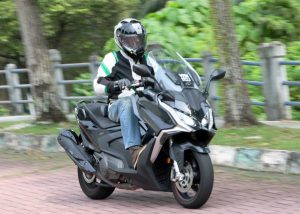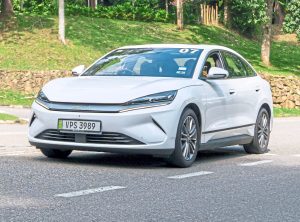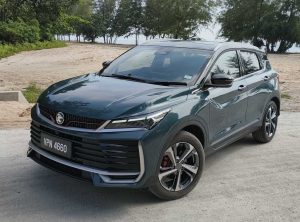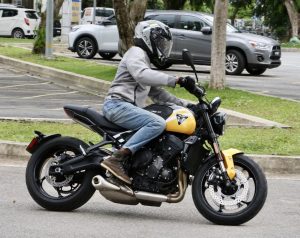WOLFSBURG: In the list of words used to describe Volkswagen’s Passat, the word "exciting" almost never crops up.
Indeed the Passat, which is named after the German for easterly trade winds, is a byword for dullness.
It is reliable, economical, comfy to sit in (yawn, yawn) but does not turn heads. In short, it is rather boring.
The car was born in the 1970s and has now been in the Volkswagen range for 50 years after engineers abandoned the rear-mounted air-cooled engine that once powered everything from the Beetle to camper vans.
In 1973, the Passat ushered in an era of front-wheel-drive cars, a year before the Golf and it quickly advanced to become a best-seller.

In the space of 50 years, the Passat has sold around 30 million units, making it more popular than Ford's storied T or any car from General Motor and the iconic Beetle.
The Passat has a truly global reach and is sold everywhere, although sometimes badged as a Dasher, a Quantum, a Santana, a Corsar, a Carat or a Magotan as in China.
Over the years, the Passat name has remained in use in Germany while rivals like the Ford Sierra and Mondeo or Opel Ascona, Vectra and Insignia have all fallen by the wayside.
The latest Passat marks the eighth generation and although VW is busy sparking up its line-up with the all-electric mid-sized ID.7, the new model grabbed some limelight at the Munich IAA car show last month.
It is now an estate car only since the limousine version has been dropped after selling poorly in central Europe.
Back at the 1973 Geneva Car Show, VW could not know that it had such a winner on its hands. The dowdy saloon had a sloping back but no tailgate and cost 5,900 German marks to buy.

The model also broke with the tradition of VWs being named by numbers only. The Passat carried its moniker at the rear with a name which "suggests speed, smoothness and silence," as VW put it at the time.
The breath of fresh wind had been unleashed by none other than noted designer Giorgetto Giugiaro, who penned the Passat along with the Golf and Scirocco.
Instead of a completely new model, the original Passat was based on the Audi 80, which was still young at the time, said VW classic spokesman Christoph Peine.
The Passat became the forerunner of the modular design strategy that has endured to this day and there are still close ties between Audi and VW.
The new Passat was well-received by the motoring press in the 1970s and they praised its sharp Italian lines and ample interior space.
A good year later, the Variant estate followed with a steeper rear hatch and folding rear seat, turning the Passat into a station wagon.

It became the ultimate practical car and ideal for the family man. As a company car it boosted the German economy and kept thousands of travelling salesmen on the move. Versions with flashing blue lights were bought by police and fire services up and down the country.
VW cultivated this dull but worthy image image and the Passat morphed from one generation to the next with new technical highlights. The frugal Formula E version appeared as far back as 1982 and four-wheel-drive arrived in 1991.
VW nudged the Passat into luxury class in 1996 with the 275 hp W8, which paved the way for the ultimately doomed Phaeton luxury limousine. Meanwhile the Passat became a bestseller in China and a slightly stretched one sold well in North America,
VW produced the Passat in many countries over the years; not only in China and the US, but also in Japan, Brazil, Mexico and South Africa. Its home in Germany was a plant in the northern port of Emden, to where production was relocated in 1977 and remained for eight generations.

The current Passat is only available in wagon form.
Only now has assembly moved to Bratislava together with the Skoda Superb. Emden will make the ID.7.
Anyone who drives the first-generation estate these days finds themselves beamed back to the 1970s and perched on rust-red upholstery, looking at a sparse vinyl-clad dashboard.
It is surprising how small the Passat was back then and how much space it nevertheless offered: At 4.19 metres long, it is still a hand's breadth shorter than a Golf today.
At 900 kilos, the Passat Variant was only about half as heavy as the current model, which is why its engines, which are puny from today's point of view, delivered lively performance.
Sadly, there are few first generation Passats left on the road and the classic community is only interested in the uprated, more powerful models which can cost up to €14,000 (RM71,000).














